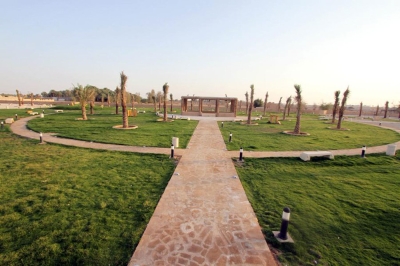
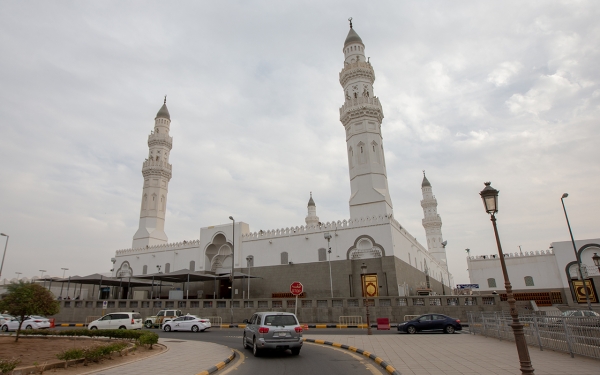
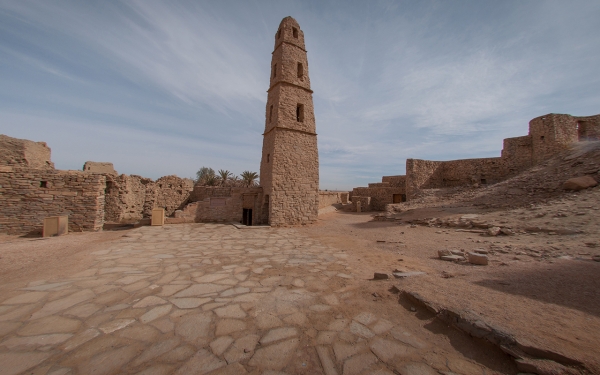
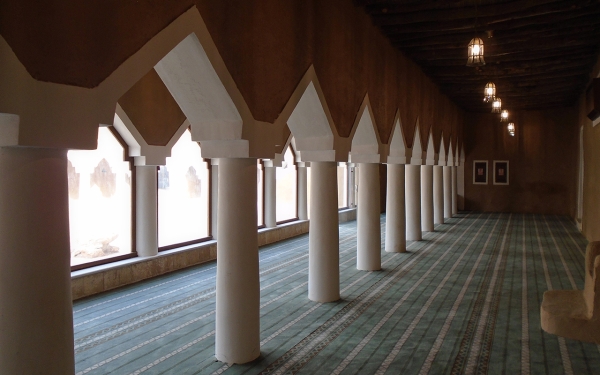
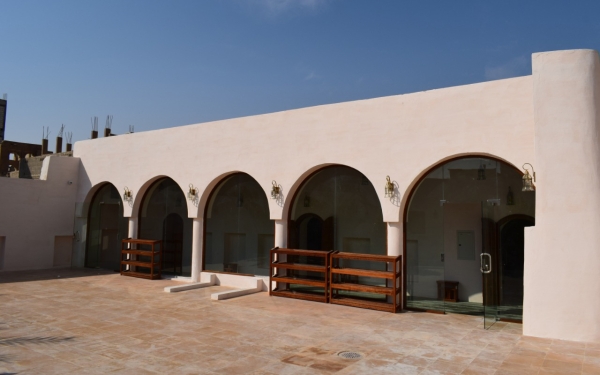
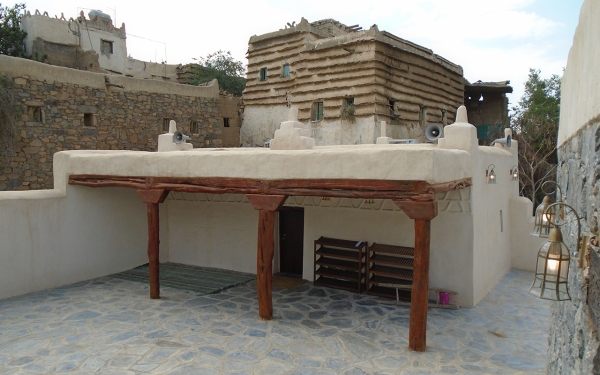
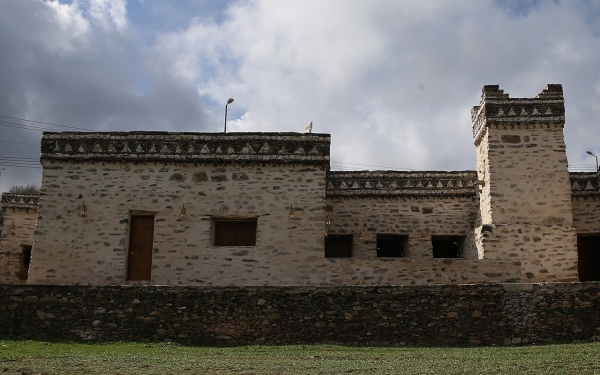
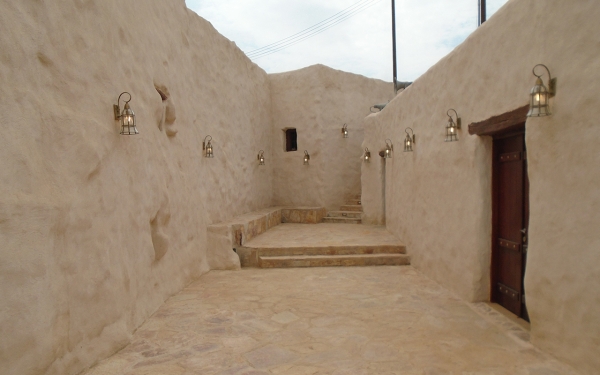
Historical mosques in the Kingdom are some of the most important landmarks of urban and cultural heritage in the nation, as they are places of worship for Muslims. These mosques are characterized by their simplicity, and tend to sheer away from extravagance. Since they were first established by the founding King Abdulaziz Bin Abdulrahman Al Saud, the Kingdom maintained them by rehabilitating them for worship and prayer, restoring their urban authenticity and strengthening their religious and cultural status.
Maintaining historical mosques in Saudi Arabia
In 2015, the Custodian of the Two Holy Mosques, King Salman Bin Abdulaziz al-Saud, approved the sponsorship of a special program that maintains ancient mosques in the vicinity of the historical Diriyah project, which involves thirty-four mosques. Moreover, the program supported and restored a number of mosques in Medina, and covered the expenses for the restoration of the Hanafi Mosque in historic Jeddah. In the same year, the Saudi Commission for Tourism and National Heritage (currently the Heritage Commission) established the National Program for the Preservation of Historic Mosques, which covered more than 1,140 historical mosques.
Prince Mohammed Bin Salman Project for the Development of Historical Mosques
The Prince Mohammed Bin Salman Project for the Development of Historical Mosques was announced in 2018 with the support and guidance of the Crown Prince and Prime Minister, His Royal Highness Prince Mohammed Bin Salman Bin Abdulaziz. The project aims to rehabilitate 130 historical mosques in several regions of the Kingdom. The first phase of the project developed and rehabilitated thirty mosques across ten regions at SAR50 million within 423 days.
The project added new elements to the mosques, such as prayer rooms for women, and services for people with special needs, in addition to developing some service facilities. The most prominent completed mosques are Jarir Al-Bajali mosque in Taif, which is the oldest one on the list, in addition to Sheikh Abu Bakr Mosque in Al-Ahsa, Al-Dakhla Mosque in Riyadh, and Al-Nasb Mosque in Asir.
Elements of historical mosques in Saudi Arabia
Historical mosques often consist of a praying hall (or the front trellis), which is adjacent to Al Qibla wall. It is characterized by its simplicity and is formed of one or two rows of open columns in the courtyard of the mosque. The praying hall evolved over time and took many forms according to the time and place. The safa which is an area on the opposite side of the praying hall evolved in some mosques to form a corridor that surrounds the sahn or courtyard of the mosque. In between, there is an open courtyard which in some mosques is a multi-purpose main yard. The prayer hall is open to this yard without a corridor or a safa, such as in Asiri, Tihama or mountainous mosques.
The minaret is one of the newly introduced elements. In historical mosques, it took the form of a bench over the roof. Minarets were built for the first time in the seventh century AD in Omar Ibn Al-Khattab Mosque in Dumat Al-Jandal. Some mosques include khalwah (seclusion), which is an underground hall reserved for praying, and is accessible through a staircase from the courtyard. Some mosques may not have khalwah, such as in Jalajil mosques in Najd, or they may be located at the top of the sahn, such as in Zahira Mosque in Dayriah.
Ablution areas are formed of a waterway installed within the walls, alongside some openings that can be controlled, and small wall partitions to ensure privacy for people performing the ablution. Moreover, another waterway drains and collects water in what is called ain (spring). This water is sometimes used to irrigate small gardens next to the mosque, as in some of Al-Ahsa mosques.
Quwat or Rowazin, which are slits in the wall, are among the functional decorative elements in the mosque. They are used to store Mushafs and religious books. Some mosques contain a number of stucco decorations and a few inscriptions on the doors.
Integration of historical mosques with the urban environment
Historical mosques in all cities of the Kingdom often blend in with the urban surroundings. These mosques are rarely built independently from their surroundings, as they are the start or center of these urban areas. This pattern is evident in most of the villages in the south and the north of the Kingdom. It might differ slightly when the mosque is located in bigger cities where there is a main mosque dedicated for Friday prayer, in addition to a number of small mosques for the five daily prayers.
In big cities, more than one mosque is reserved for Friday prayer. This pattern can be seen in Hofuf, Al-Ahsa, such as with Al-Jabri Mosque in Al-Kut, Imam Faisal Bin Turki Mosque in Al-Naathel neighborhood, and Al-Shafi’i and Al-Mimar mosques in Jeddah. Some exceptions were made, as a number of mosques were built semi-independently from the surrounding architectural blocks, such as Al-Quba Mosque in Al-Ahsa, and Al-Anbariya Mosque in Medina.
Architectural styles of historical mosques in Saudi Arabia
The Architectural Heritage Centre, represented by the Historical Mosques Program, classified the architectural styles of the historical mosques in the Kingdom into ten styles, according to their geographic location, climate specificity, culture, and construction style, as follows: The Hijazi style, the Red Sea style, the Tihama style, the Sarawat Mountains style, the southern desert style, the Asiri style, the Najdi style, the Ahsa style, the Arabian Gulf coast style, and the northern style.
The Hijazi style is characterized by the mashrabiya (decorative enclosed balconies) on the fronts of the mosques. This style appears in Makkah, Medina and Taif. These elements were also used in the Red Sea style and the Hijazi style with some differences in the details. The Tihama style, which extends from Tihama villages in Taif to Jazan, is characterized by multi-story rock architecture or the use of hay and tree branches. The Sarawat Mountains style depends on stones in building mosques, and it is similar to the Tihama style, but the rock type is different. It spreads in the mountain villages of Al-Baha, Taif, Asir, and Jazan.
The southern desert style in Najran and Dhahran Aljanoub depends on multi-story clay buildings. The Asiri style or "rain shades" relies on horizontal shelf-like stone-coated clay that extend on building facades, as shown in Abha and the surrounding areas. The Najdi style spreads in Riyadh, Qassim, and Hail. It relies on clay, as well as clay mixed with volcanic stones from Hail. Al-Ahsa and the eastern coast styles are characterized by visual and decorative features using clay and limestone. The Arabian Gulf coast style (Farouch) uses sea stones and limestone. The northern style is present in Tabuk and Al-Jouf and is characterized by its diversity and the use of clay and stones.
Related quizzes
Related articles
